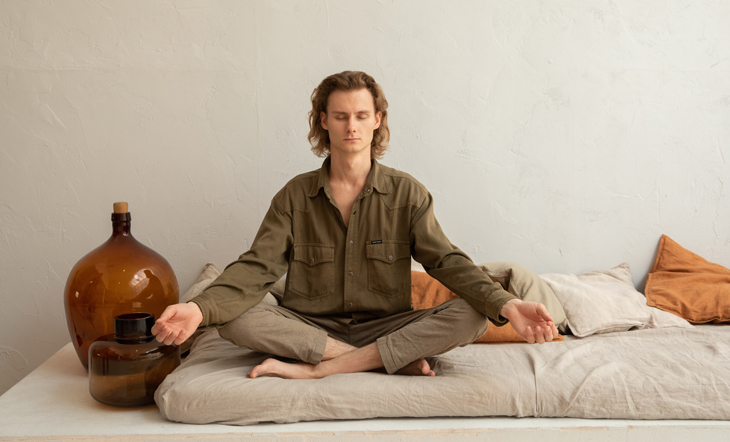The No. 1 Tip You Need To Live To 100, From A Longevity Expert
Prepare to be floored.

Image by Juno Jo / Unsplash September 20, 2023 We carefully vet all products and services featured on mindbodygreen using our Our selections are never influenced by the commissions earned from our links. Growing up, I used to do my homework on the floor. I played games on the floor, I gabbed to my friends on the floor, and sometimes I ate my meals on the floor. As I reflect now, I probably gravitated towards the ground because it, well, grounded me (I am a proud Earth sign, after all). I’m likely not alone in my affinity for the floor, but as we get older, many of us lose this sense of childlike curiosity about the ground—especially as our joints become stiffer with age. Still, various cultures today emphasize eating and gathering on the floor—and according to longevity expert and Blue Zones founder Dan Buettner, those communities often live past 100. Coincidence? He thinks not. This ad is displayed using third party content and we do not control its accessibility features.
Advertisement
The longevity perks of sitting on the floor
Buettner starts by validating what we've been talking about on mindbodygreen for years: “One of the biggest killers of older people is falls,” he says on the mindbodygreen podcast. Let us remind you that if you're over 65, there's a one in four chance that you'll fall1, and if you do, studies show your chances of falling again double. If you fall and break your hip,2 there is a 30 to 40% chance3 that you will die within a year (not necessarily from the fall itself, but perhaps from other complications related to the accident).
How can you prevent these statistics from becoming reality? You focus on maintaining muscle mass as you age. "Keep an eye on your muscle mass. Treat it like it is literally gold," mobility pioneers Kelly and Juliet Starrett shared on another mindbodygreen podcast episode.
And, look, there are various exercises you can do—like resistance training and jump rope—to strengthen your muscles and joint health supplements you can take to support mobility, but frequent everyday habits are what will actually help you reach centenarian status, says Buettner.
“When you're sitting on the floor, you're [likely] getting up and down off the floor 30 times a day,” he shares, which inherently trains your balance and lower body strength. “Lo and behold, in Okinawa, [they have] far fewer falls,” Buettner continues.
That doesn’t mean you must toss every single piece of furniture in your home. “In the Nicoya Peninsula, Costa Rica, they're sitting on furniture, but they're also in their gardens,” he adds. “When they're in their gardens, they're on their knees, they're bending over, [they’re using] the same sort of muscles that we never use when we're sitting in our offices, watching TV, and so on.”
Essentially, he wants you to incorporate movements into your daily life that intrinsically develop your lower body strength; so even if you don’t commit to an everyday strength training session in the gym, you still work those necessary muscle groups.
Advertisement
This ad is displayed using third party content and we do not control its accessibility features.
The takeaway
Is sitting on the floor the silver bullet for longevity? Of course not. You can’t eat highly processed foods, ignore your mental health, and skip out on sleep and think sitting on the floor will magically help you live to 100. But according to Buettner, it is one of those “counterintuitive” practices that helps people in the Blue Zones live much longer, healthier lives. And as Buettner declares, these inherent behaviors “add up to a much bigger piece of the longevity pie than we think.”

 JimMin
JimMin 

































